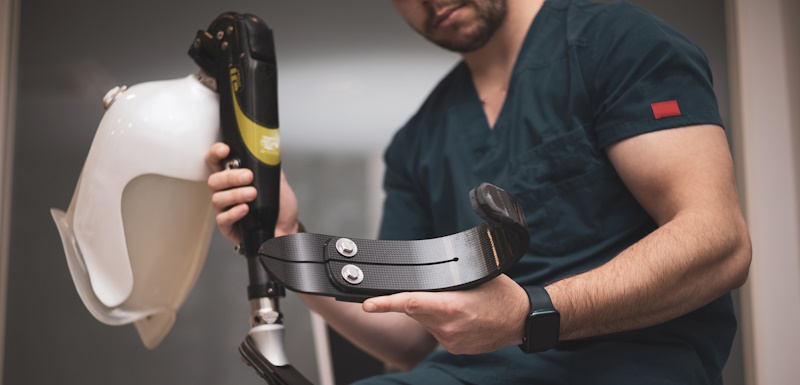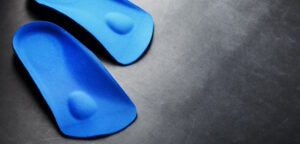A Helpful Primer Before You Explore Custom Prosthetics Near You in Overland Park
Although it may be hard to believe, some of the first prosthetics were made of wood and cartonnage, which is composed of plaster, linen, and glue. As you can imagine, there was plenty of room for improvement, both in aesthetic appearance and functionality.
In the current landscape of prosthetics, technological advancements and innovative materials have transformed the way individuals regain mobility and reclaim their lives. Custom prosthetics are now crafted with lightweight, durable, and cutting-edge materials, offering a level of comfort and functionality that was once unimaginable.
In this blog, we’ll explore some of the most noteworthy materials used when fashioning advanced prosthetics and what makes them distinct. When you’re ready, contact a prosthetist at Cotton Orthotic and Prosthetic Associates to end your search for custom prosthetics near you.
Prosthetics That Use High-Tech Polymers
Modern prosthetics have undergone a significant evolution over the past few decades, with high-tech polymers taking center stage of the discussion. These lightweight, yet sturdy materials contribute to a more comfortable and natural walking experience when using lower-limb prosthetics. Some notable advantages of using high-tech polymers include:
- High strength and durability
- Comfortable fit for a wide array of wearers
- Modification using other materials to enhance specific properties
- Ease of manufacture.
Carbon Fiber and Advanced Prosthetics
Another standout material in the realm of custom prosthetics is carbon fiber. Renowned for its exceptional strength-to-weight ratio, carbon fiber allows for the creation of prosthetic limbs that foster high-functioning activities and long-term durability. The main benefits of using carbon fiber in prosthetics include:
- Lightweight construction, reducing mobility challenges.
- Resistance to wear and tear; extreme rigidity.
- Creation using a mold, to ensure maximum comfort for wearers.
- The ability to perform high-functioning activities and athletics while wearing them.
- Resistance to adverse temperatures.
If there is a singular drawback to advanced prosthetics that use carbon fiber, it’s that they may potentially cost more when compared to prosthetics that utilize less sturdy materials. Those who want to get a quote should consult with their prosthetist at Cotton Orthotic and Prosthetic Associates in Overland Park.
Explore Lifelike Advanced Prosthetics That Use Silicone
For many amputees, the look and feel of their prosthetic limb is as essential as its functionality, which is why silicone is now a key player in the custom prosthetics space. Using this highly versatile material, prosthetists create artificial limbs so realistic and detailed that they resemble a real limb. Other advantages of silicone for prosthetics include:
- Support for a wide variety of applications, including limbs, toes, fingers, and breast tissue.
- Adjustment to the wearer’s temperature; soft and comfortable.
- The ability to layer over virtually any prosthetic.
- Being hypoallergenic and non-irritating to skin
- The ability to be molded to accommodate all shapes and sizes of wearer.
- Being crafted to endure stretching and typical wear and tear.
How Titanium Combines Strength and Biocompatibility in Prosthetics
For individuals seeking a balance between strength and biocompatibility, titanium has emerged as a frontrunner in custom prosthetic construction. Recognized for its exceptional durability and resistance to corrosion, titanium allows for the creation of prosthetic components that withstand the rigors of daily use while minimizing the risk of allergic reactions. Other advantages of titanium include:
- Suitability for use in a wide array of medical and commercial applications.
- Mitigation of adverse biologic effects and reactions in wearers.
- Non-radiopaque, non-magnetic, and ultra lightweight qualities.
- Usability as a surface treatment, providing enhanced resilience against wear and tear.
- Flexibility with strong spring-back qualities
Advanced Prosthetics That Utilize Plastic and 3D Printing
The advent of 3D printing has revolutionized the prosthetics landscape, introducing unparalleled precision and personalization. 3D printed prosthetic limbs can be tailor-made to fit an individual’s unique anatomy, ensuring a comfortable and secure fit. The lightweight nature of 3D-printed materials contributes to enhanced comfort without compromising strength. Explore other benefits of this material:
- 3D-printed plastic can be used as an overlay on any internal structure
- Cost-efficient materials
- Quick and easy to produce
- Fosters functionality and ease of use
How to Find Advanced Prosthetics Near You in Overland Park
The incorporation of lightweight, durable, and advanced materials in custom prosthetics is more than a technological achievement; it’s a testament to the commitment to enhancing the lives of individuals with limb loss. As the field continues to evolve, the synergy of cutting-edge materials and thoughtful design continues to redefine what is possible, empowering amputees to navigate the world with confidence and resilience.
Those who are ready to explore their prosthetic options should contact Cotton Orthotic and Prosthetic Associates to schedule a consultation. During your first appointment, our prosthetist will get up to speed on your medical background and make some recommendations for prosthetics that best align with your budget, insurance, personal preferences, and mobility goals.
Get started today by calling (913) 338-2672 to speak with our scheduling department. You can also email us using the contact form on our website.







